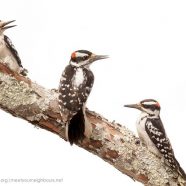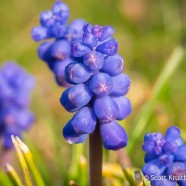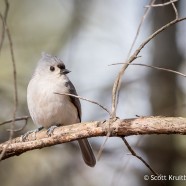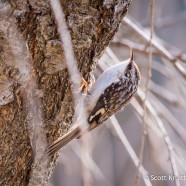Hairy Woodpecker
Here’s the next of the “John James Audubon” series of Meet Your Neighbours shots by RTPI Affiliate Sean Graesser – the Hairy Woodpecker (Picoides villosus). The less common of our backyard black and white woodpeckers, the Hairy Woodpecker is often more elusive despite it being larger than our Downy Woodpecker. They have a larger bill, sometimes described as thorn-like, and feature all white outer rectrices unlike the black barred of the Downys. Photographed for the Meet Your Neighbours global biodiversity project in Connecticut while on assignment for The Roger Tory...
Read MoreGrape hyacinth
The Grape Hyacinth is one of those first signs of real spring in so many yards and gardens across America. Though native to the Old World the perennial plant has become naturalized throughout the New World. Here is an extra close close-up of some flowers from Friday that always come up around the same lamp post every year after being planted decades ago. Yes, this was taken a whole two days ago, back in spring – you know, before that arctic cold front packing powerful winds and snow brought some winter back to us…oh, climate…
Read MoreTufted Titmouse
This cute Tufted Titmouse may be building a home soon, if it is not already, depending on where you live. Have you ever put out dog fur for them to use as nesting material? Titmice, and other small songbirds that use nestboxes and cavities like the Black-capped Chickadee, will take fur that you put out in say, an empty suet cage, and use it to line their nest. Some have even been known to try to pull the fur right off a dog or another animal! You may want to be sure, of course, that the fur is free of any parasites or chemicals and is otherwise clean. They will readily pull out very large...
Read MoreBrown Creeper
Brown Creepers must be the winner in the category of “most calm, friendly and tame birds that are yet the most difficult to get a good photo of” because they stay glued to the tree bark and rarely stop moving, spiraling up and down the trunk. They examine every crevice they can for any small insects or spiders, locking those big feet on the bark and staying steady with their long tail, using that large curved bill to snag their snack. I have plenty of semi-blurry photos of the species and even more that are too dark or obstructed. Today I took out my camera to photograph a few of...
Read MoreNorthern Flicker
Here is the species that started everything for Roger Tory Peterson – the Northern Flicker. It and all birds came to represent to Roger all the freedom, beauty and vitality of the natural world. This Northern Flicker is a male as you can see by the black mustache. The bird is feeding on the ground, as many flickers do, searching for ants, beetles and other insect life. This winter is a good example of how a warmer than usual stretch of weather can impact a certain species as these strongly migratory birds might not have to fly so far to find uncovered, unfrozen earth. Climate change...
Read More








